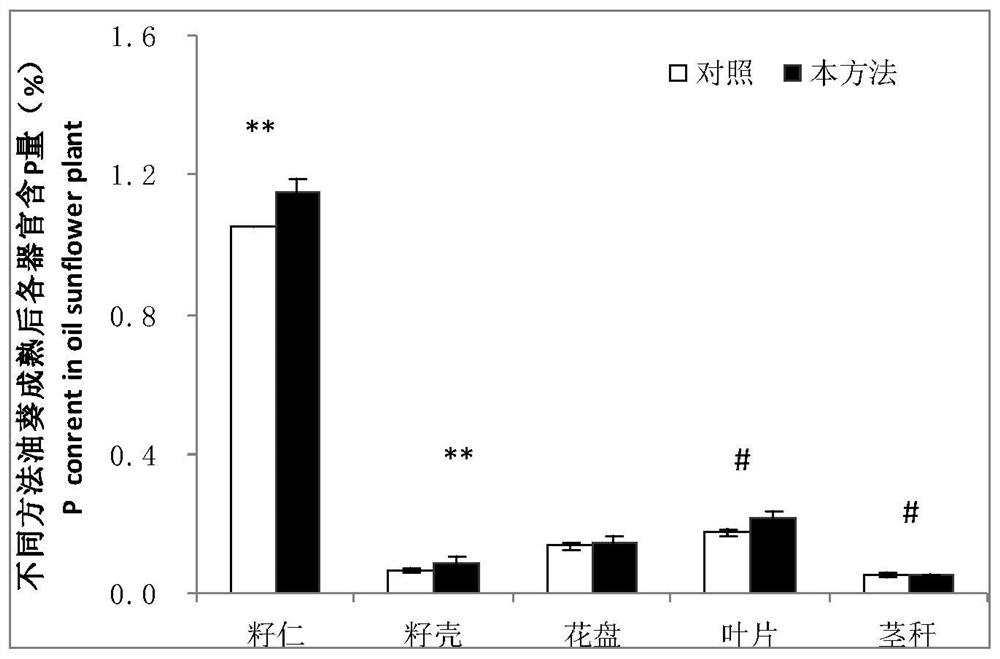A method of improving barren heavy saline-alkali land by planting pioneer crops
A technology for saline-alkali land and crops, which is applied in the field of improving barren and heavily saline-alkali land, can solve the problems of unsynchronized release of effective nutrients from fertilizers to crops, affecting crop yield, environmental pollution, etc., so as to avoid secondary salinization and nitrogen loss, and improve planting. Benefit, the effect of avoiding environmental risks
- Summary
- Abstract
- Description
- Claims
- Application Information
AI Technical Summary
Problems solved by technology
Method used
Image
Examples
Embodiment 1
[0032] Embodiment 1: When the surface temperature was stable at -4°C in the previous winter before oil sunflower sowing, the local underground salt water was extracted, and the surface flood irrigation or sprinkler irrigation was carried out, and the irrigation water volume was 180mm; in March, the early spring was covered with plastic film; in June Before the rainy season in the middle of the middle ten days, the strip film is uncovered at intervals to facilitate the application of conditioners, straw carbon, fertilizers and sowing; the dosage of soil conditioners is 7500kg / hm 2, the conditioner is bio-organic fertilizer, the content of organic matter is 35%-40%, the content of total humic acid is 10%-15%, the content of MgO is 1%-1.2%; the amount of straw carbon is 2250kg / hm 2 The main component of straw carbon is the carbon powder material formed after carbonization of biomass straw such as corn, wheat and rice; fertilization: the amount of fertilizer applied per hectare of ...
Embodiment 2
[0033] Example 2: When the surface temperature was stable at -4°C in the previous winter before oil sunflower sowing, the local underground salt water was extracted, and flood irrigation or sprinkler irrigation was performed on the surface, and the irrigation water volume was 186mm; in March, the early spring was covered with plastic film; in June Before the rainy season in the middle of the middle ten days, the strip film is uncovered at intervals to facilitate the application of conditioner, fertilization and sowing; the dosage of soil conditioner is 10950kg / hm 2 , the conditioner is biological organic fertilizer, the content of organic matter is 35%-40%, the content of total humic acid is 10%-15%, the content of MgO is 1%-1.2%; the amount of straw carbon is 3750kg / hm 2 The main component of straw carbon is the carbon powder material formed by carbonization of biomass straw such as corn, wheat and rice; fertilization: the amount of fertilizer applied per hectare of soil is eq...
Embodiment 3
[0034] Example 3: When the surface temperature was stable at -4°C in the previous winter before oil sunflower sowing, the local underground salt water was extracted to perform flood irrigation or sprinkler irrigation on the surface, and the irrigation water volume was 183 mm; in March, the early spring was covered with plastic film; in June Before the rainy season in the middle of the middle ten days, the strip film is uncovered at intervals to facilitate the application of conditioner, fertilization and sowing; the dosage of soil conditioner is 8500kg / hm 2 , the conditioner is bio-organic fertilizer, the content of organic matter is 35%-40%, the content of total humic acid is 10%-15%, the content of MgO is 1%-1.2%; the amount of straw carbon is 2750kg / hm 2 The main component of straw carbon is the carbon powder material formed after carbonization of biomass straw such as corn, wheat and rice; fertilization: the amount of fertilizer applied per hectare of soil is equivalent to ...
PUM
 Login to View More
Login to View More Abstract
Description
Claims
Application Information
 Login to View More
Login to View More - R&D
- Intellectual Property
- Life Sciences
- Materials
- Tech Scout
- Unparalleled Data Quality
- Higher Quality Content
- 60% Fewer Hallucinations
Browse by: Latest US Patents, China's latest patents, Technical Efficacy Thesaurus, Application Domain, Technology Topic, Popular Technical Reports.
© 2025 PatSnap. All rights reserved.Legal|Privacy policy|Modern Slavery Act Transparency Statement|Sitemap|About US| Contact US: help@patsnap.com



